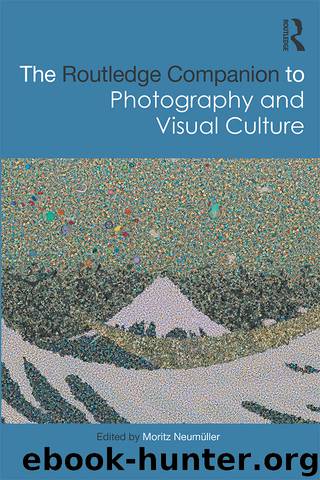The Routledge Companion to Photography and Visual Culture by Moritz Neumüller

Author:Moritz Neumüller
Language: eng
Format: epub
Publisher: Taylor & Francis (CAM)
Self-representation and Identity
Although the photo booth questions the concept of authorship owing to its automatism and formal constrictions, it also allows a use whereby performative and narrative identity construction are enhanced. The term “identity” is derived from the Latin identitas and refers to that which is identical. As explained by historian Estrella de Diego (2009: 24), there was a change in the typical formulas of the eighteenth-century portrait in terms of identity understood as the identical (the more significant group characteristics that an individual shares with others) which evolve towards identity as the “quintessence of the uniqueness that separates one person from another.” The photographic self-portrait became an alternative to the mirror (which had historically been where one would look at oneself, together with the pictorial self-portrait, to which not many people had access) and an ideal tool for exploring individuality and the concept of identity. The camera helps to create alternative representations of oneself, one’s gender, class or race, gradually becoming the main mechanism for creating, modelling, questioning and advertising one’s identity, both as an amateur and as a professional.
The photo booth also collaborated in the positioning of the photographic camera as a key tool for representing oneself. Its specificity is constituted by a series of elements that go beyond the strictly photographic frame of the image it produces. In this respect, it can be considered an artistic genre in itself, as Raynal Pellicer sought to demonstrate in Photo Booth: The Art of the Automatic Portrait (2011). The photo booth is first and foremost a place, with its own peculiarities, designed for generating a kind of image inevitably linked to the specific nature of this space. The booth is a space of symbolic representation. Clément Chéroux (2012) uses the metaphor of the confessional to explain what the photo booth permits: a public place that invites intimate confession. As with any intermediate place, as we have seen, it is susceptible to hybridization and play. There, the private and the public, the internal and the external, are intertwined and respond to each other. In 2013 the artist Tracey Emin—following in the footsteps of many artists who make the private public, a key artistic trend of the second half of the twentieth century—created the work entitled My Photo Album, a visual autobiography compiled from albums that she had kept since childhood. The images show her family trips, her student days, her exhibition openings and self-portraits with famous people. The book devotes several pages to photographs taken in a photo booth, and even includes her university student card and passport. Emin, starting from the aesthetic of the family album, embarked upon an introspective journey looking at different stages of her life and observing the evolution of the self. In a similar way, the artist Brenda Moreno in her work B to B (2016) used a collection of workbooks that included photographs and collages, and searched for her past through her identity (see Color Plate 15). For this purpose she chose her own family photographs and photographs of other people and horses that had in some way formed her past.
Download
This site does not store any files on its server. We only index and link to content provided by other sites. Please contact the content providers to delete copyright contents if any and email us, we'll remove relevant links or contents immediately.
Shoot Sexy by Ryan Armbrust(17141)
Portrait Mastery in Black & White: Learn the Signature Style of a Legendary Photographer by Tim Kelly(16484)
Adobe Camera Raw For Digital Photographers Only by Rob Sheppard(16386)
Photographically Speaking: A Deeper Look at Creating Stronger Images (Eva Spring's Library) by David duChemin(16161)
Bombshells: Glamour Girls of a Lifetime by Sullivan Steve(13108)
Art Nude Photography Explained: How to Photograph and Understand Great Art Nude Images by Simon Walden(12348)
Perfect Rhythm by Jae(4621)
Pillow Thoughts by Courtney Peppernell(3395)
The Book of Joy by Dalai Lama(3217)
Good by S. Walden(2915)
The Pixar Touch by David A. Price(2739)
Fantastic Beasts: The Crimes of Grindelwald by J. K. Rowling(2543)
A Dictionary of Sociology by Unknown(2518)
Humans of New York by Brandon Stanton(2379)
Read This If You Want to Take Great Photographs by Carroll Henry(2303)
Stacked Decks by The Rotenberg Collection(2270)
On Photography by Susan Sontag(2129)
Photographic Guide to the Birds of Indonesia by Strange Morten;(2088)
Insomniac City by Bill Hayes(2083)
